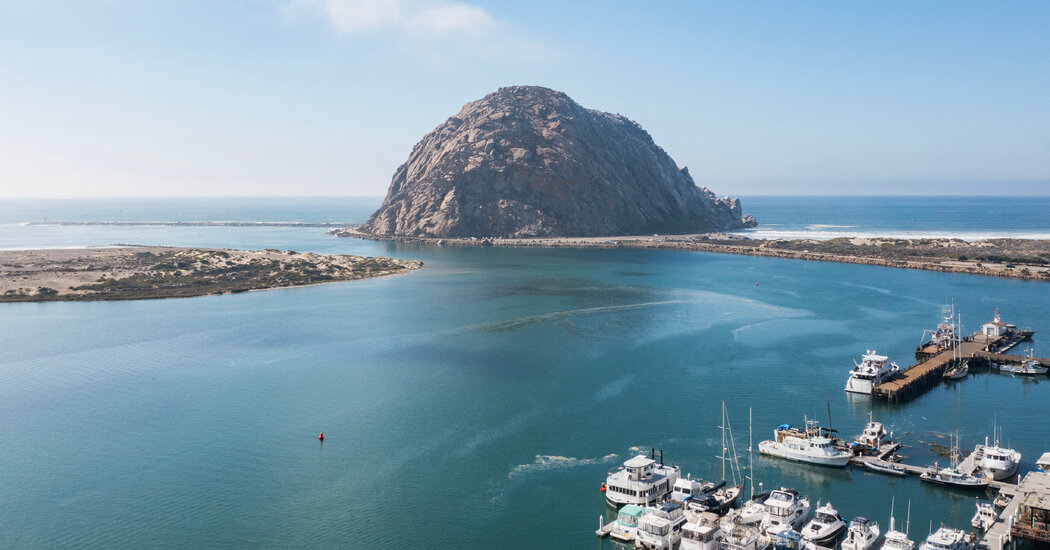My paddle slips gently through calm ocean water as the kayak glides toward the mouth of Morro Bay Harbor. I approach a sandbar covered in resting cormorants, as sea otters float in nearby kelp, inky-eyed pups nestled on their mothers’ chests. On this windless morning, the marine layer paints the world in a gentle watercolor wash. In front of me, Morro Rock rises dramatically from the landscape.
I’m on a paddle around the fish-hook-shaped Morro Bay, where sailboats bob between a working fishing port and an 800-acre wetland, near the small seaside city with the same name on California’s Central Coast. But I’m mostly here to learn more about the proposed Chumash Heritage National Marine Sanctuary, a yearslong effort spearheaded by the Northern Chumash, a tribe that has inhabited this coastline for thousands of years.
The 7,573-square-mile sanctuary would include 156 miles of coastline between the towns of Cambria and Gaviota and link the Greater Farallones and Monterey Bay National Marine Sanctuaries to the north and the Channel Islands National Marine Sanctuary to the south, creating a chain of conservation of more than 20,000 square miles. The new designation would limit offshore oil drilling, acoustic underwater testing and other activities in the area, while providing funding for research and protection to numerous Chumash sacred sites, both on and offshore.
It would also be the first tribally led effort of its kind in the United States, with the potential to create a new model for Native American co-management on public lands and waters, and the possibility of a different kind of tourism, one that is centered on and enhanced by Native history, culture and knowledge.
This proposal comes after extensive community outreach and environmental reviews, as well as coordination with the National Oceanic and Atmospheric Administration, which oversees sanctuary management and operations, including hiring staff, enforcing regulations and controlling the budget, among other responsibilities. Now, after years of work, the sanctuary is nearing the final stages of the designation process.
But NOAA has thrown a late wrench in the plans. In an effort to allow for the development of an offshore wind energy project, NOAA is now suggesting shifting the sanctuary’s borders to remove a section of the coastline that includes Morro Bay and Morro Rock — or Lisamu’, a site sacred to the Chumash that was always meant by the tribe to be the hub of the sanctuary.
As I…
Click Here to Read the Full Original Article at NYT > Travel…
